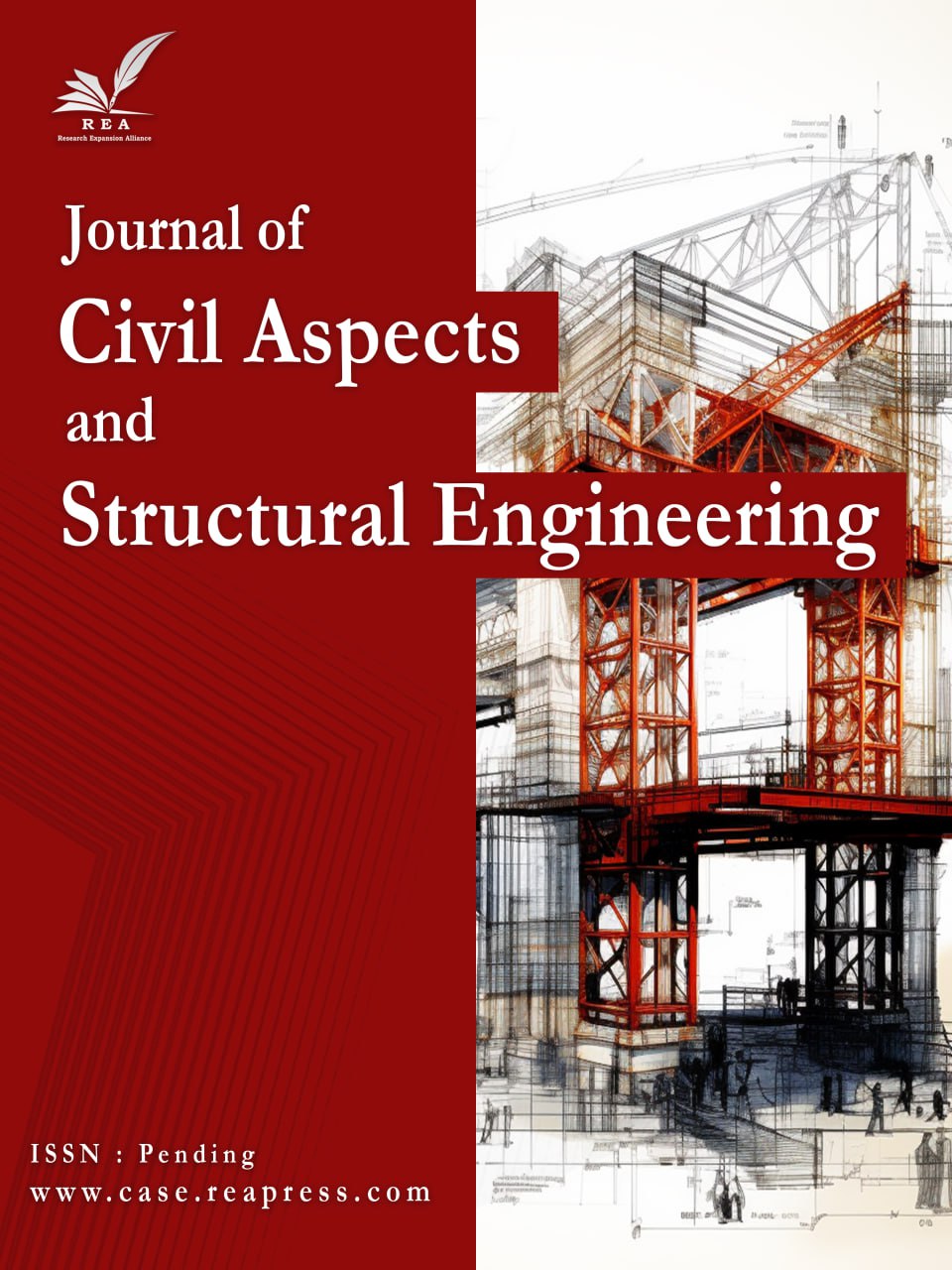Investigating the Effect of Pozzolan on the Strength of Concrete Containing Hybrid Fibers with FRP Screws
Abstract
Time, cost and quality are important factors in the implementation, which have a significant impact on the construction industry. Any type of progress and development that leads to the improvement of the level of these three factors always receives the attention and interest of civil engineers. The use of pozzolan and FRP systems is one of the important factors in increasing the resistance properties of concrete. In such a way that consumable resins are used for the purpose of gluing the composite layers to the concrete surface that is placed below it and the coatings are also used to protect the materials. Strengthening building columns with the help of screws is one of the common methods of increasing the strength and strength of these columns. This research aims to investigate different percentages of pozzolan and the number of turns of FRP in increasing the resistance properties of concrete. For this purpose, having three mixing plans, A, B and C, the required samples are taken from these three plans. Mixing plan A has no pozzolan, and mixing plans B and C have 10 and 20% pozzolan, respectively. Samples No. 1 without a screw and samples No. 2 and 3 have one and two turns. By conducting compressive strength tests, it has been observed that the highest percentage increase in strength is seen in sample B, which has 10% pozzolan. The results have shown that the simultaneous use of 10% pozzolan and 2 rounds of FRP had a significant effect on increasing the compressive strength of the samples at the age of 90 days. The results for the tensile strength test show that the use of pozzolan and FRP screw has a small effect on its increase, and this effect is about 6% in the highest case. The slump test results have shown that the slump of fresh concrete samples is reduced by adding 20% pozzolan. The test of the modulus of elasticity shows that the addition of pozzolan causes a decrease in the modulus of elasticity, and the use of FRP wrap partially compensates for this decrease in the modulus of elasticity.
Keywords:
FRP wrap, Pozzolan, Compressive strength, Tensile strength, Permeability, Slump, Modulus of elasticityReferences
- [1] Ji, Y., Zou, Y., & Li, W. (2022). Sulfate erosion investigation on FRP-confined concrete in cold region. Scientific reports, 12(1), 10839. https://doi.org/10.1038/s41598-022-15075-z
- [2] Tu, Y., Liu, D., Yuan, L., & Zhang, Y. (2022). Corrosion resistance of concrete strengthened with fibre-reinforced polymer sheets. Magazine of concrete research, 74(2), 54–69. https://doi.org/10.1680/jmacr.20.00042
- [3] Tafsirojjaman, T., Ur Rahman Dogar, A., Liu, Y., Manalo, A., & Thambiratnam, D. P. (2022). Performance and design of steel structures reinforced with FRP composites: A state-of-the-art review. Engineering failure analysis, 138, 106371. https://doi.org/10.1016/j.engfailanal.2022.106371
- [4] Abedini, M., & Zhang, C. (2021). Dynamic performance of concrete columns retrofitted with FRP using segment pressure technique. Composite structures, 260, 113473. https://doi.org/10.1016/j.compstruct.2020.113473
- [5] Zeng, J. J., Guo, Y. C., Liao, J. J., Shi, S. W., Bai, Y. L., & Zhang, L. (2022). Behavior of hybrid PET FRP confined concrete-filled high-strength steel tube columns under eccentric compression. Case studies in construction materials, 16, e00967. https://doi.org/10.1016/j.cscm.2022.e00967
- [6] Djamaluddin, R., Irmawaty, R., Amiruddin, A. A., & others. (2022). Effect of reinforcement of hybrid layer FRP (GFRP and CFRP) on bending behavior of reinforced concrete beams. Nusantara science and technology proceedings, 50–55. https://doi.org/10.11594/nstp.2022.2508
- [7] Hela, M. H. and R. (2007). The effect of Metakaolin and Silica fume on the properties of lightweight self consolidating concrete. ACI symposium publication, 243. https://doi.org/10.14359/18741
- [8] Shahawy, M., Mirmiran, A., & Beitelman, T. (2000). Tests and modeling of carbon-wrapped concrete columns. Composites part b: engineering, 31(6–7), 471–480. https://doi.org/10.1016/S1359-8368(00)00021-4
- [9] Almusallam, T. H. (2007). Behavior of normal and high-strength concrete cylinders confined with E-glass/epoxy composite laminates. Composites part B: engineering, 38(5–6), 629–639. https://doi.org/10.1016/j.compositesb.2006.06.021
- [10] Rizkalla, S., Hassan, T., & Hassan, N. (2003). Design recommendations for the use of FRP for reinforcement and strengthening of concrete structures. Progress in structural engineering and materials, 5(1), 16–28. https://doi.org/10.1002/pse.139
- [11] Xiao, J., Tresserras, J., & Tam, V. W. Y. (2014). GFRP-tube confined RAC under axial and eccentric loading with and without expansive agent. Construction and building materials, 73, 775–785. https://doi.org/10.1016/j.conbuildmat.2014.09.038
- [12] Worrall, C., Kellar, E., & Vacogne, C. (2020). Joining of fibre-reinforced polymer composites. National composites centre. https://b2n.ir/r53462
- [13] C. Cozmanciuc, R. Oltean, V. M. (2009). Strengthening techniques of RC columns using fibre reinforced polymeric materials. Engineering, materials science. https://b2n.ir/t73275


